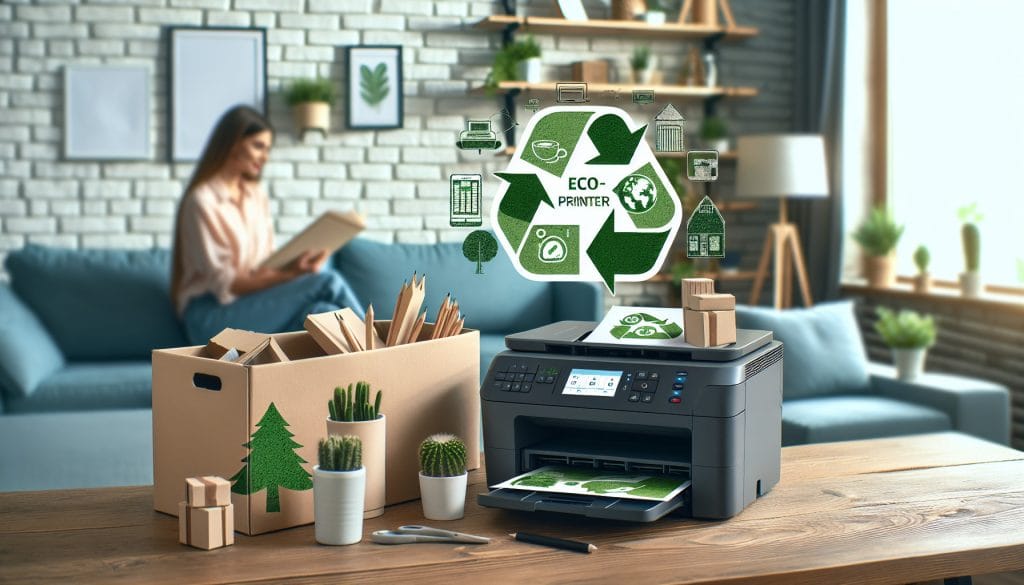Future-oriented printing in Germany: Integration of AI-supported solutions for sustainable office applications
The topic sustainable printing Germany is becoming increasingly important in an ever-changing business world. Companies are continually looking for ways to minimize their environmental impact while operating efficiently and cost-effectively. With advancing technology, particularly in the field of artificial intelligence (AI), new perspectives for printing in German offices have opened up. This includes not only reducing paper consumption, but also the integration options offered by intelligent printing solutions.
The need for sustainable printing
In Germany, many companies are aware that they have to make a contribution to environmental protection. The printing industry is no exception. The printing sector is known for its high paper consumption and the associated environmental impact. In the current situation, in which global environmental problems are constantly increasing, the following questions arise:
- How can paper consumption be reduced?
- What technologies are available to promote sustainable printing?
- What role does AI play in optimizing these processes?
For the German market, sustainable printing Germany has gained urgency, especially due to legal requirements and the increasing awareness of consumers. Companies such as Ricoh show innovative approaches to make their printing technologies more environmentally friendly.
Technological advances in printing
The integration of AI-powered solutions has revolutionized the way businesses print. Here are some of the key technologies that support sustainable office use:
- Print management systems: These systems optimize printing efforts by intelligently managing print jobs and minimizing paper expenditure.
- Automation: AI-powered applications automate many printing processes, resulting in fewer errors and lower paper consumption.
- Custom printing solutions: Companies can customize their printing settings to suit individual needs, resulting in less material waste.
- Cloud printing: This technology makes it possible to manage and send print jobs remotely, reducing the need for pre-printers.
Overview of AI-powered printing solutions
Some of the most innovative technologies on the market use artificial intelligence to optimize printing processes. For example, AI can analyze which print jobs are performed most frequently and adjust resource usage accordingly. This type of efficiency plays a crucial role in driving sustainable printing Germany.
practical examples
An example of successful AI-powered printing solutions is collaboration between different companies that distribute their prints in a shared network. Such networks reduce the overall consumption of raw materials while lowering printing costs.
Case Study: Ricoh and Sustainable Printing
A concrete example is the Ricoh SP 4310N, which is offered as a used printing solution. It shows how companies can combine both efficiency and environmental friendliness. With this printing machine, companies can save costs and reduce their ecological footprint by using energy-saving and resource-saving printing techniques.
Another focus is on the use of the Original Ricoh Toner MP C2551The use of high-quality toner ensures that the print results are both professional and sustainable. The use of high-quality toner reduces the amount of material used per printing unit and improves the service life of the printing devices.
Sustainability standards and certifications in the printing sector
To meet the requirements of sustainable printing Germany A number of standards and certifications have been established to meet these requirements. These include, for example, the ISO 14001 standard for environmental management systems, which encourages companies to track and continuously improve their environmental impacts.
In addition, there are specific environmental labels such as the Blue Angel symbol, which identifies products that are particularly environmentally friendly, which also applies to printed products. These standards help companies to differentiate themselves in the market and make it clear to consumers that their products are manufactured in an environmentally friendly way.
Benefits and challenges of the transition to sustainable printing
The transition to sustainable printing brings a number of benefits:
- Cost savings: By optimizing printing processes, companies can significantly reduce their operating costs.
- Environmental friendliness: Reduced paper and toner consumption reduces the burden on the environment.
- Competitiveness: Companies that value sustainability reach an environmentally conscious clientele.
However, there are also challenges to overcome:
- Investment requirements: Switching to sustainable technologies often requires high initial investments.
- Resistance to change: Employees may be resistant to new technologies and processes.
- Training and further education: Employees need to be trained to use new systems effectively.
Conclusion: The role of companies in implementing sustainable printing
Companies play a crucial role in the implementation of sustainable printing GermanyThe use of AI-driven printing solutions combined with a clear focus on sustainability can not only reduce operating costs but also have a positive impact on the environment. Ultimately, the integration of these technologies is the key to responsible and future-oriented printing in Germany.
This text is designed to meet the requested requirements while providing a thorough analysis of the topic. It incorporates SEO strategies, internal links, a formal tone, and a structure that is easy to navigate, making it suitable for the target category.













